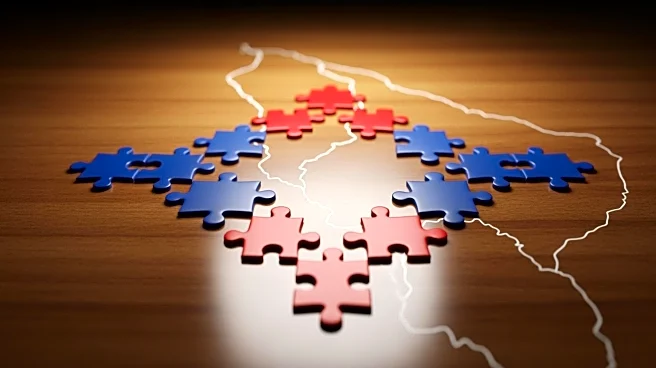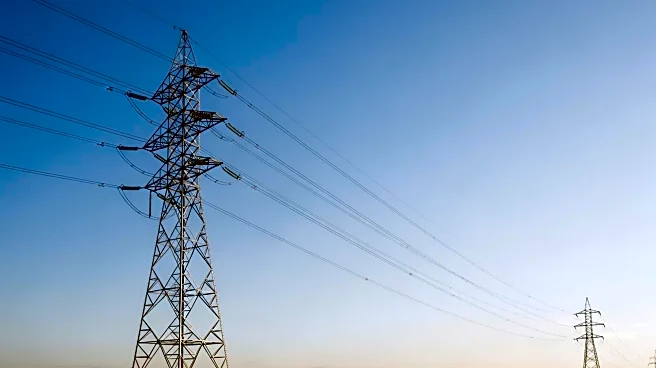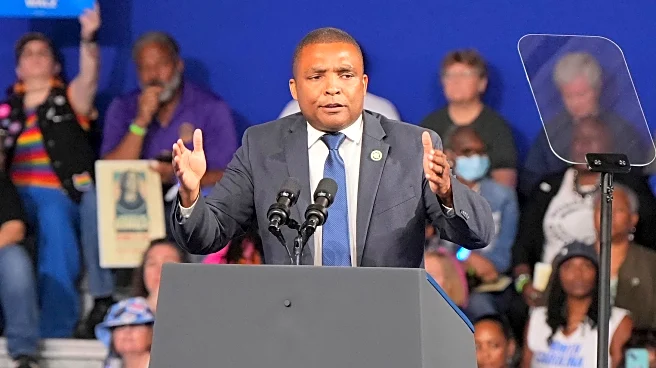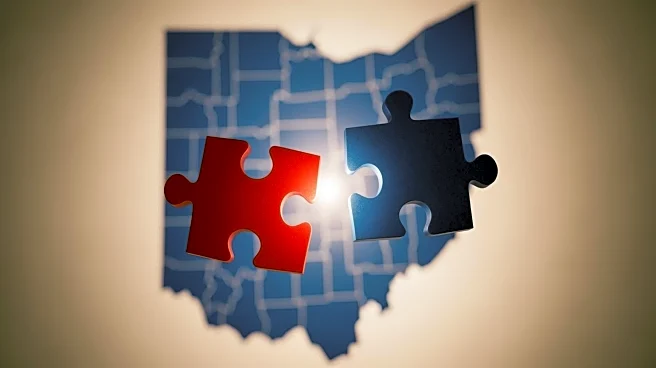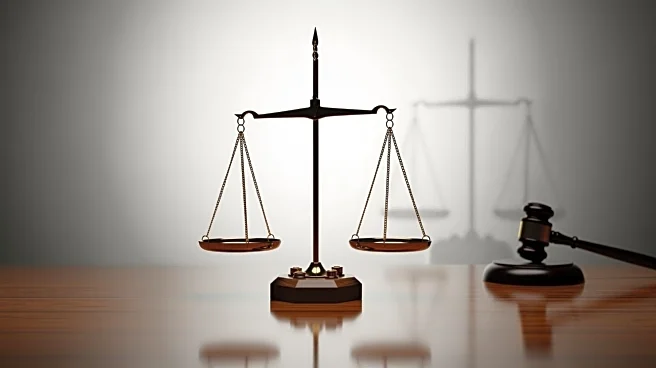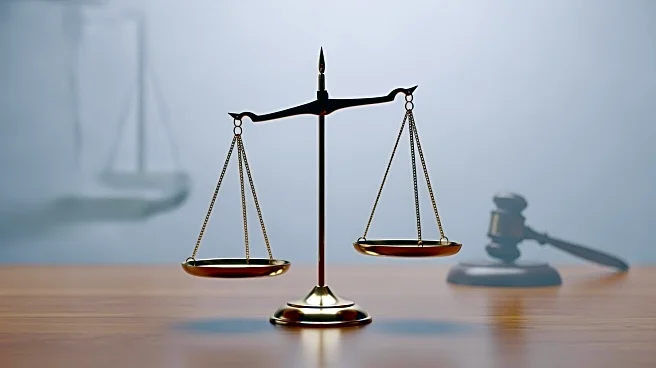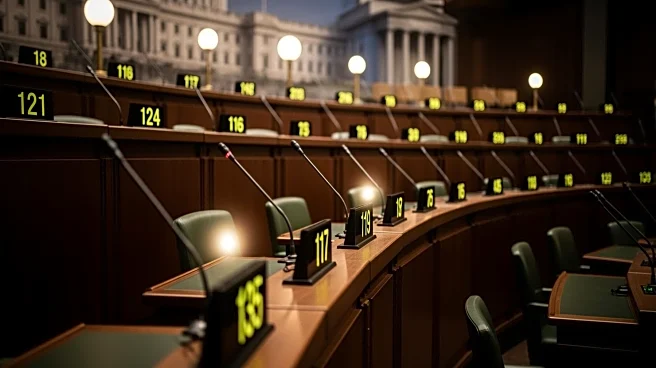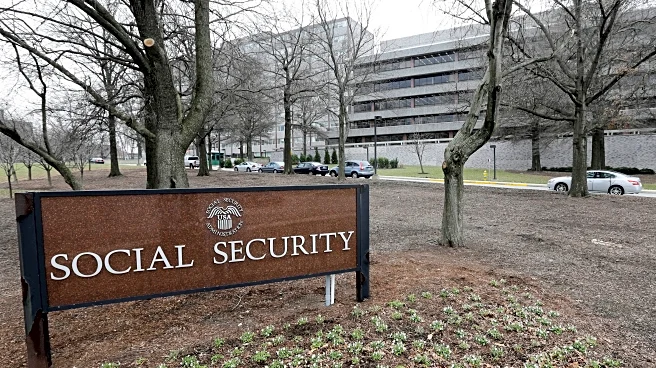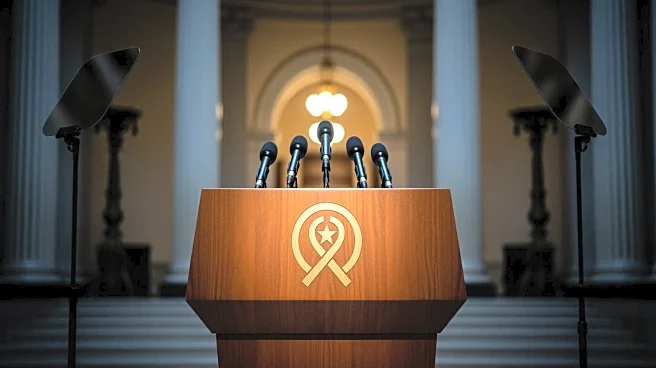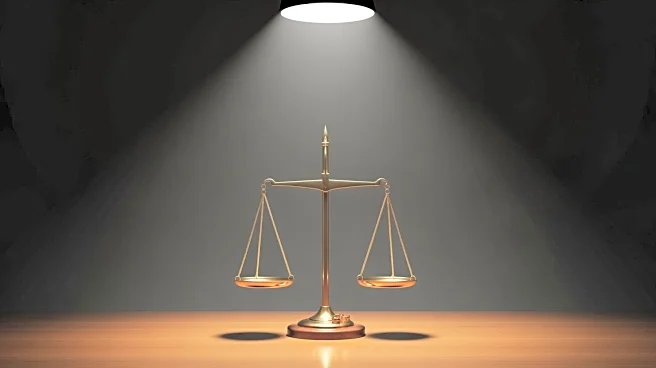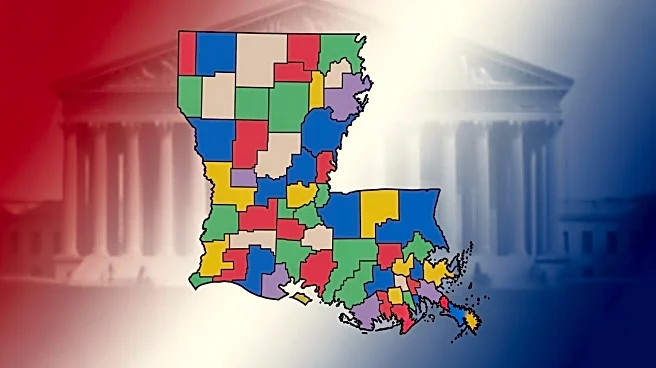What's Happening?
Governor Mike DeWine has scheduled the first meeting of the Ohio Redistricting Commission for October 21. The commission, tasked with redrawing the congressional map, includes Republican executive officeholders
such as DeWine, Secretary of State Frank LaRose, and Auditor Keith Faber, alongside legislative members from both parties. The meeting will focus on whether a congressional map can be agreed upon by the two Democrats on the panel, a necessary step before moving to the full General Assembly. House Speaker Matt Huffman has indicated that formal actions will be taken during the meeting, although he has not committed to presenting a map. The commission's efforts follow a previous legislative panel meeting that ended without agreement on September 30.
Why It's Important?
The redistricting process in Ohio is crucial as it determines the congressional representation for the state. The outcome of the commission's work could significantly impact the political balance in Ohio, potentially affecting national politics given Ohio's role as a swing state. The current map favors Republicans 10-5, but Democrats have proposed a map that could result in a more balanced 8-7 split. The commission's decisions could influence future elections and legislative priorities, affecting both state and national policy directions.
What's Next?
If the commission fails to reach a bipartisan agreement by the end of October, Republican lawmakers, holding a supermajority, could pass a map without Democratic support. However, such a map would only be valid for six years. The commission's actions will be closely watched by political leaders and stakeholders, as the redistricting outcome could set precedents for future electoral processes in Ohio and beyond.
Beyond the Headlines
The redistricting process raises broader questions about electoral fairness and representation. The debate over the congressional map reflects ongoing national discussions about gerrymandering and its impact on democracy. The commission's work could influence public trust in the electoral system and highlight the challenges of achieving bipartisan cooperation in politically divided environments.
